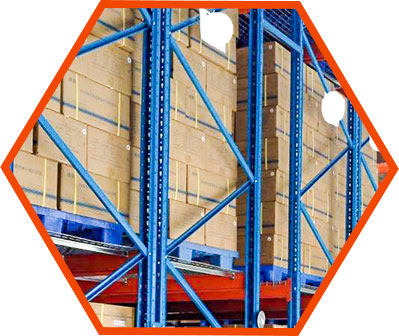The Drive In rack is one of the most commonly used heavy duty racks. This system is used in warehouses that need to store a large amount of similar goods. Understanding its features helps you understand whether this is the best choice for your business. We will support you in understanding what Drive In racks are and their characteristics through the following articles.
Pallets are stored on support rails connected to the columns, and are accessed by forklifts. When the forklift enters the system, the load will rise to the height of the guide rail and place it in the selected storage location.
The pallet is loaded and unloaded by entering from the front of the system and then retreating, which makes it an option for LIFO.
However, with the through frame, the forklift can enter through both ends of the system for loading and unloading, allowing the use of FIFO storage options, but requires additional aisles.
Drive in and through rack systems have many options to help store and distribute products safely and efficiently. Columns located in heavy traffic areas can be recessed, called backward tilting, to reduce the possibility of forklift collision. It can also include floor mounted rails and rack mounted friction rails to provide further protection.

LIFO (last in, first out) or FIFO (first in, first out) load methods.
Deep lane storage reduces space usage, cuts costs and holds more loads.
Multiple access aisles eliminated.
Extra control over inputs and outputs.
More storage density instead of the direct access of Pallet Racks.
Specifically designed for your pallets and forklifts.
Maximum space use, thanks to the maneuver halls.
Uses up to 85% of the floor for storage.
High density for storage products.
Facilitates stock control.

For products that does not need periodic rotation

For high density of storage products.

For warehouses that need space saving.

We will reply as soon as possible. Thank you for your support for our warehouse storage equipment.